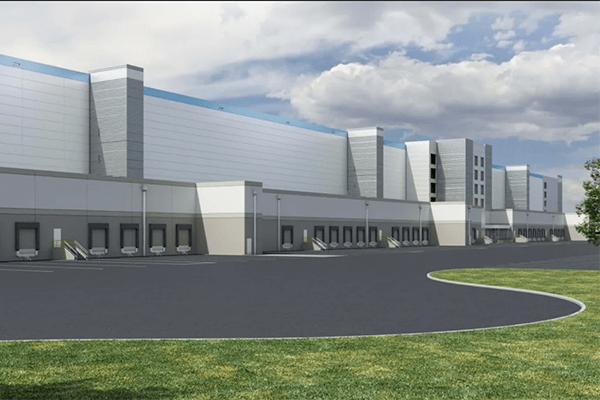|
RCBJ-Audible (Listen For Free)
|
NJ Office of Planning Advocacy In The Dept. of State Gives Local Governments A Road Map For Sensible Planning
By Rick Tannenbaum
New York’s GML (General Municipal Law) requires the Rockland County Planning Department to weigh in on most development projects proposed in Rockland’s towns and villages. Municipalities – towns and villages — are also required to “consult” neighboring governments when a project touches its borders, but are generally not bound by the concerns of those other jurisdictions.
When it comes to the many large warehouse projects that dot the county, there is no regional planning. No coordination between towns. No deference to the county, regional authorities, or the State. Projects like the 220,000 square foot warehouse project in Valley Cottage, the million-plus square foot former Novartis warehouse project in Suffern, and the proposed 475,000 square foot warehouse project off Beach Road in West Haverstraw are all reviewed by local municipal governments without the aid of any state or regional planning authorities.
New York State’s SEQRA (State Environmental Quality Review Act) offers local planning boards tools to evaluate the possible environmental impacts of these large projects, but SEQRA evaluations and planning board approvals are often inconsistent, random in application, and nearly impossible to overturn, even in the courts.
New York needs a new system of regional and/or state planning for the siting of large warehouse properties, distribution, and fulfillment centers like steps New Jersey has recently undertaken to look at planning more holistically. Last month, following a deep dive on research, input gathering and listening sessions, the New Jersey State Planning Commission adopted its Warehouse Siting Guidance, developed by the NJ Office of Planning Advocacy in the Department of State. The guidance is for local governments to use when updating their master plans, zoning, and development standards, and when reviewing development applications.
It is another layer beyond environmental review.
New Jersey has recognized that logistics industries have location and transportation needs that, unlike other land uses, make them ill-suited to certain locations. They cannot simply be located anywhere, particularly when options exist to locate them closer to major highway interchanges, where industry-preference and land use compatibility remains the greatest.
Large-scale warehousing can if not properly sited and scaled result in significant negative impacts, from the intensive consumption of undeveloped land to the degradation of habitat, air and water resources, quality of life, public health, safety, infrastructure, and transportation networks. Traffic tends to be the most obvious impact that affects communities, which the public raised concerns about. The hundreds, and sometimes thousands of daily truck and passenger car trips that logistics warehousing generates contribute to traffic jams and accidents, and the deterioration of road surfaces, in addition to harmful emissions of air pollutants, and the loss of permeable land.
Put a large-scale project in the wrong place, and the negative impacts from a single intensive facility can have a significant regional impact.
Both New York and New Jersey are largely home rule states and land-use planning and development reviews occur predominantly at the local level in both states. But New Jersey’s new initiative provides both technical assistance and guidance within the context of sound planning and policy that balances competing needs – including protecting important resources and impacted communities, while ensuring economic growth and viability.
The guidance aims to:
- Facilitate a proactive, rather than a reactive, approach; and
- Provide municipal factors to consider and balance when developing or updating a Master Plan and reviewing applications, land use, and development requirements; and
- Encourage a regional approach to planning, siting, and facilitating logistics facilities
The detailed guidance documents consider:
- Types of Warehouses
- Municipal Considerations
- The Role of Redevelopment and Brownfields
- Public Health and Overburdened Communities
- Transportation, Traffic, and Road Safety
- Sustainable Design
- Mitigation Best Practices
- Community Involvement and Public Engagement
- Taking a Regional Approach
- Special Resource Area Considerations
- The Role of State Agencies
“The guidance encourages cooperation and coordination between agencies, municipalities and counties to take a more regional and capacity-based approach to accommodating industry needs in suitable locations,” according to NJ State Planning Commission Chair Thomas Wright.
“The guidance represents the collaborative efforts and input of many state agencies, counties, communities and interests, including what we heard from the public,” said New Jersey Secretary of State Tehesha Way. “I am happy that we were able to balance concerns on both sides of this issue while working to provide implementable solutions that will allow the logistics industry to thrive more sustainably.”
New York, and particularly Rockland County would benefit from a more regional approach to warehouse siting that includes proximity to highway interchanges and major state roads, as well as design requirements intended to mitigate harm to residents such as limitations on hours of operation, light and air pollution, and increased traffic. At the same time, communities situated near highways should not be overburdened with endless warehouse projects. Comprehensive regional planning and technical and financial support for local planning boards is essential, particularly when those planning boards lack the expertise and resources to properly evaluate the impacts of large warehouse projects or feel otherwise duty-bound to uphold outdated zoning codes, and use and bulk tables.
Rick Tannenbaum brokers commercial properties with Houlihan Lawrence Commercial Real Estate. He also writes the “CRE-Connect (Commercial Real Estate)” Substack.










